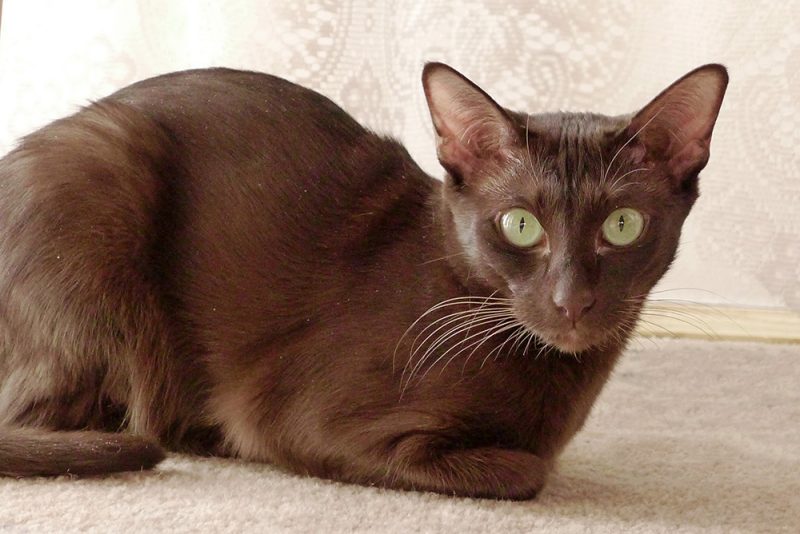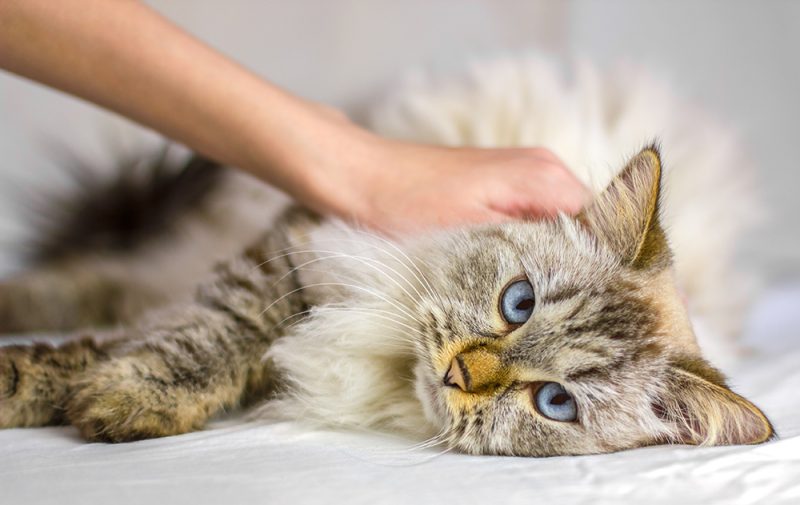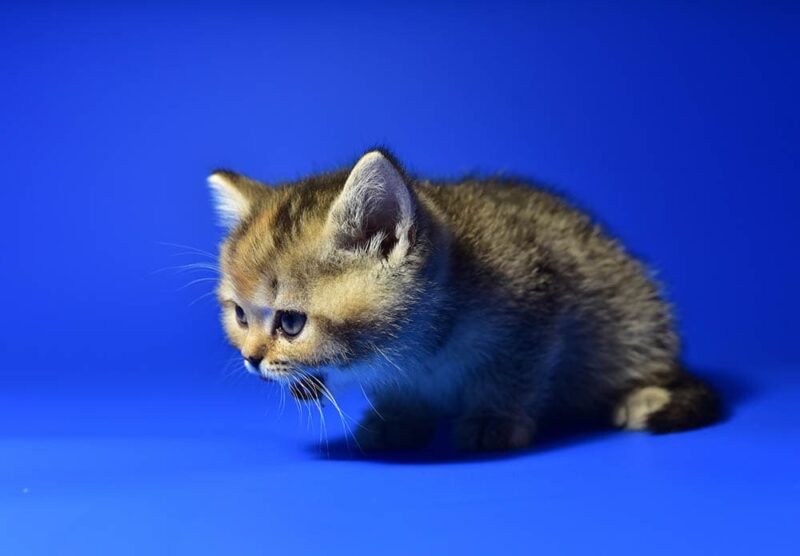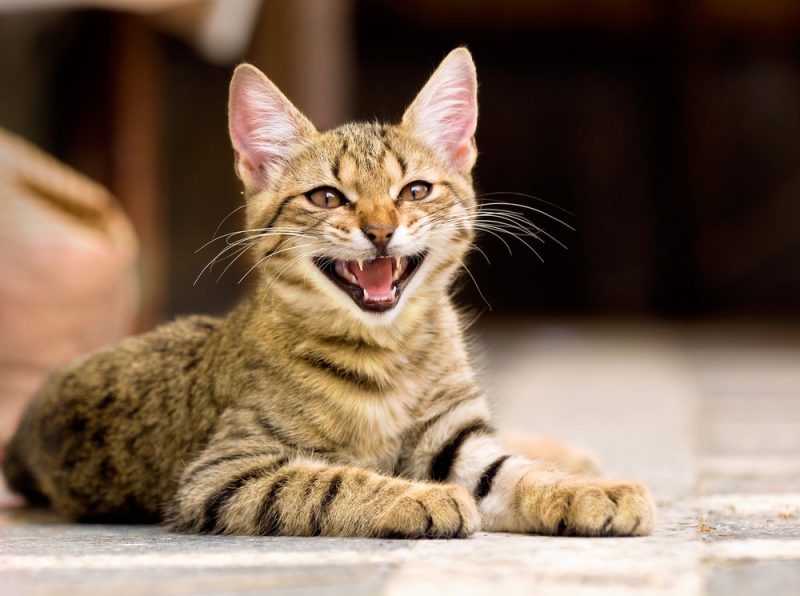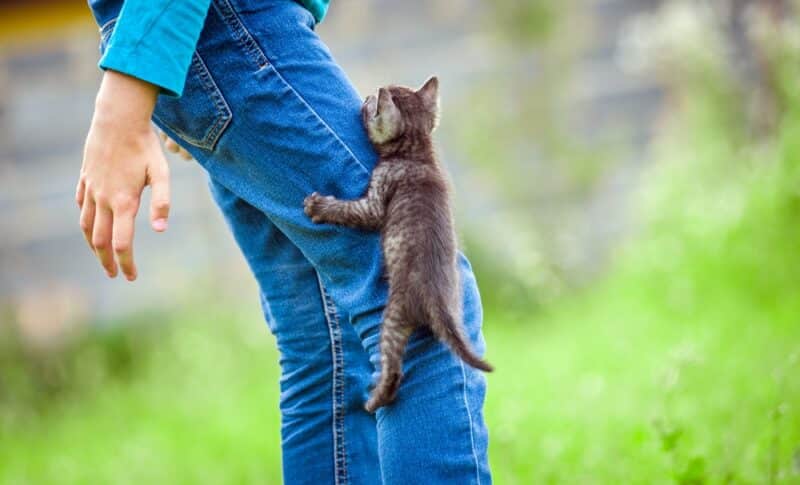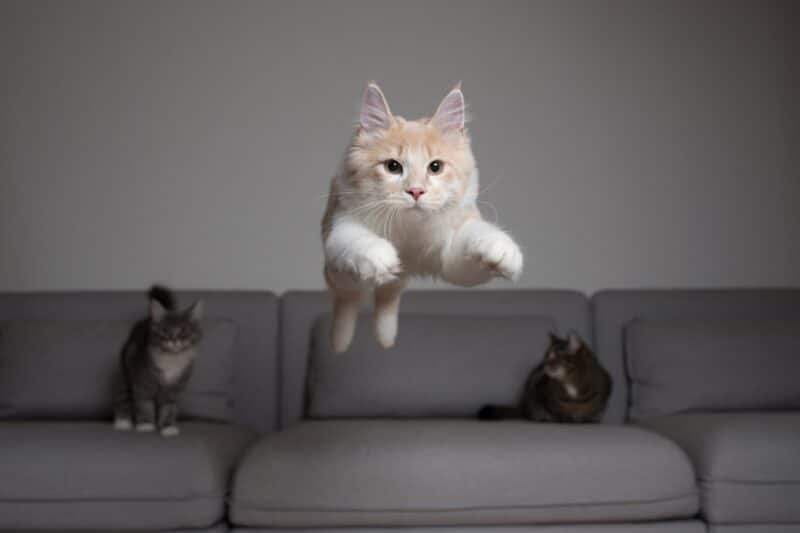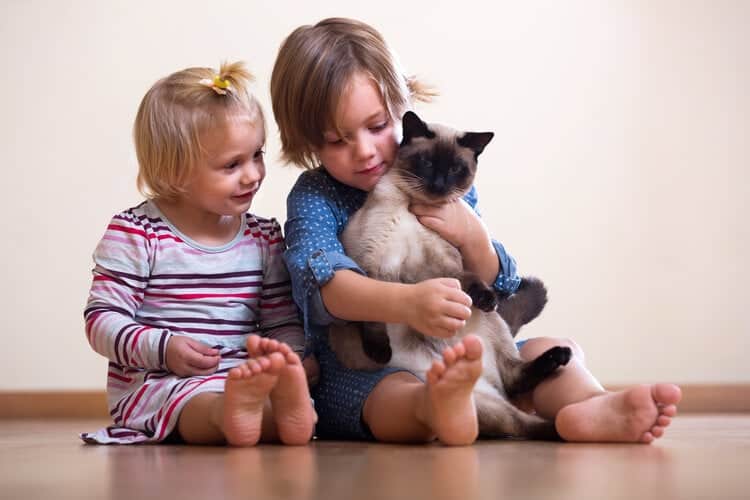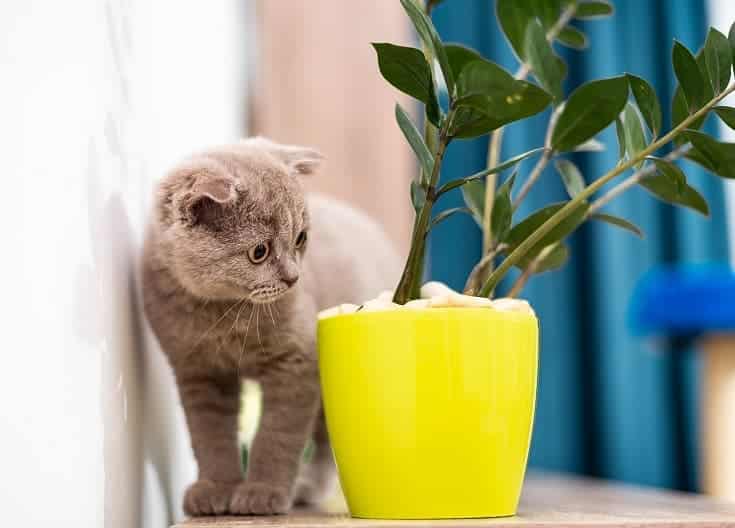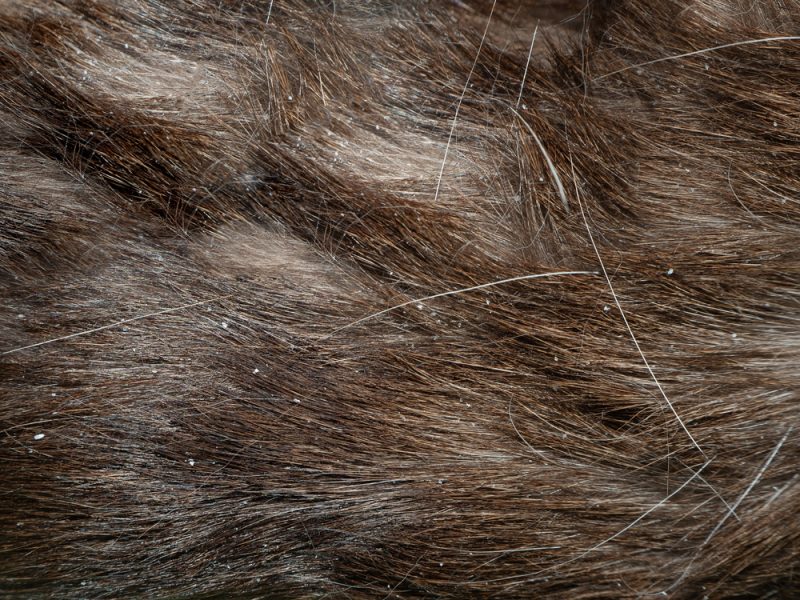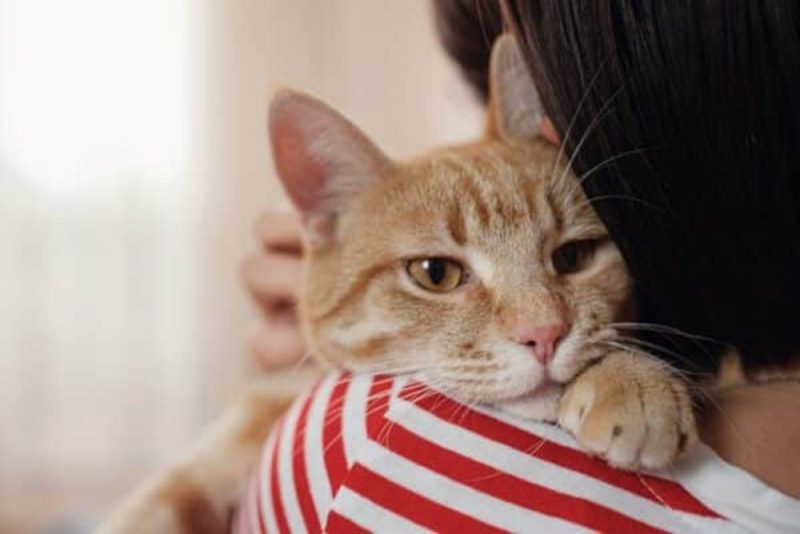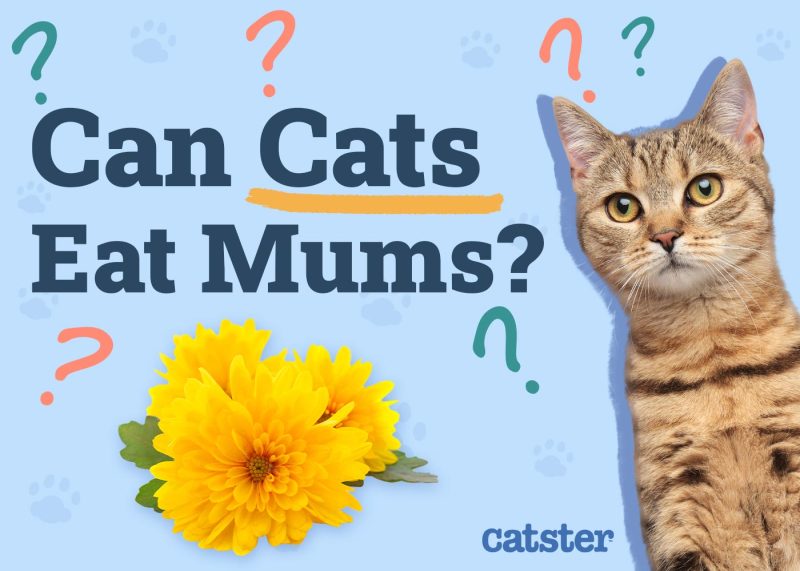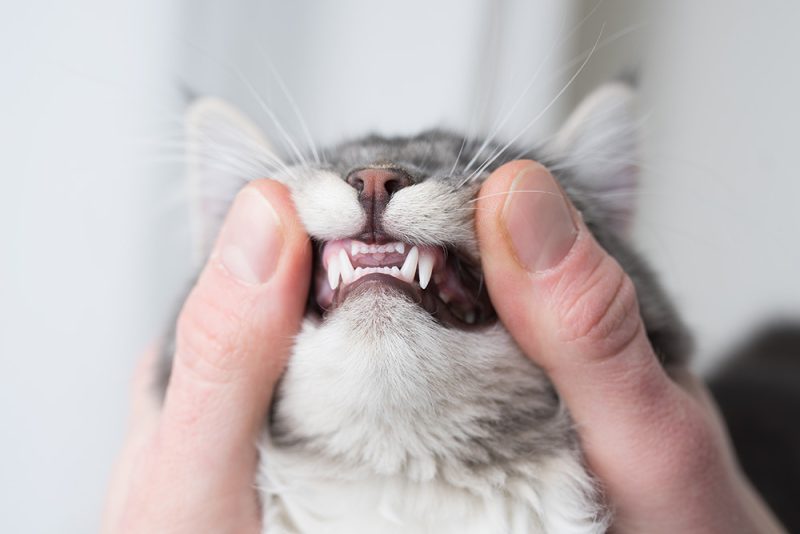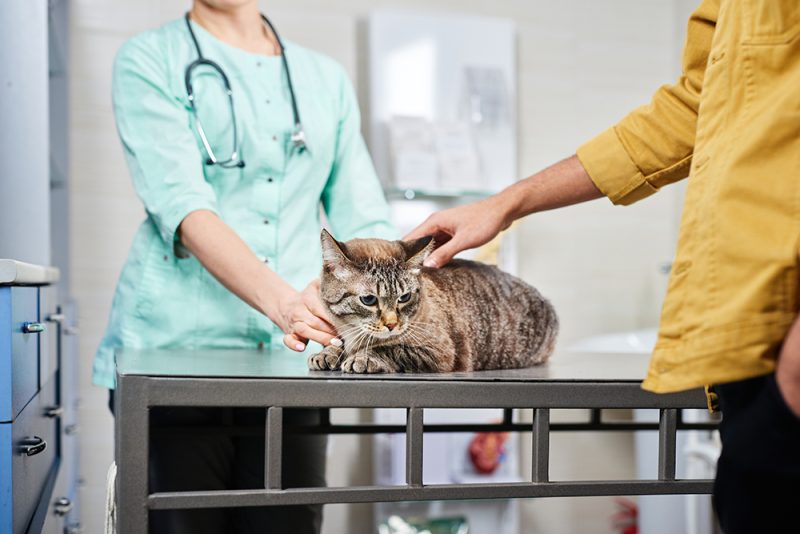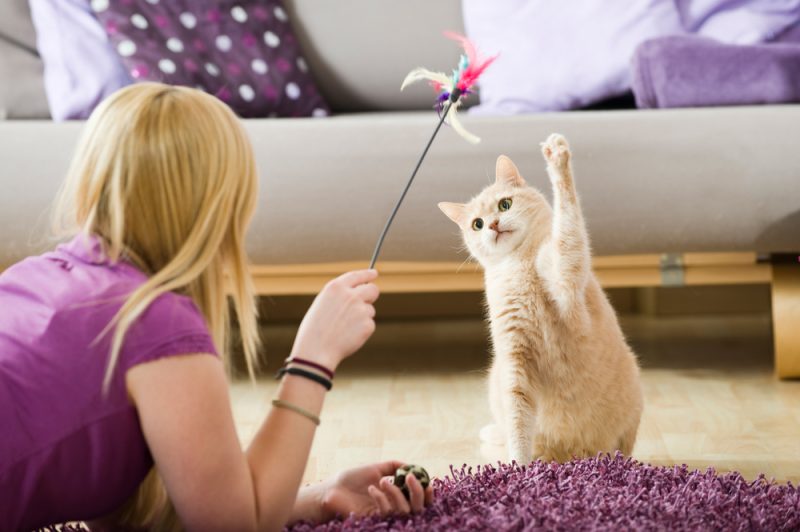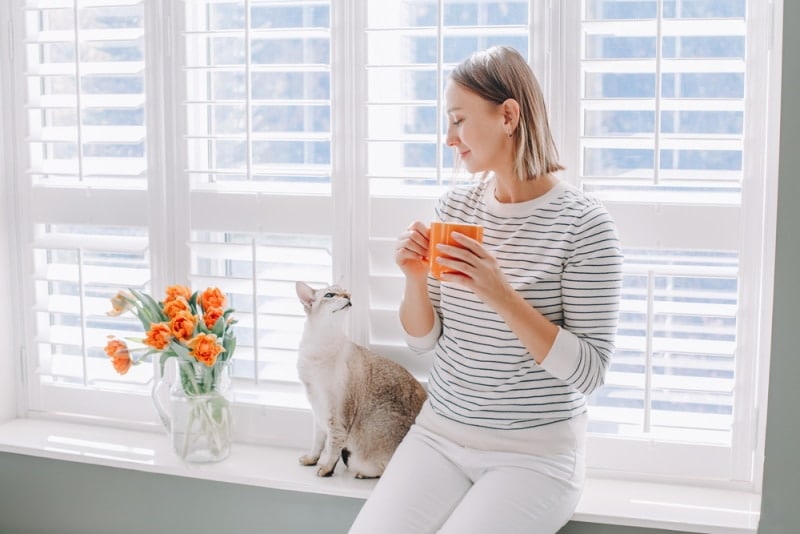In this article
View 3 More +When was the last time you spotted a brown cat? If you answered, “I can’t remember,” or, “Never!” you form part of the majority. That’s because brown cats are pretty rare, and you’d be lucky to spot one walking down the alley or perched on your front porch.
Only a handful of the 45 CFA-recognized cat breeds have brown coats, making brown cats a rarity in the cat species1. But just how rare are brown cats? Well, keep reading to find out more about these earth-colored felines.

What Determines the Cat’s Color?
Your cat’s coat color is primarily determined by genetics (the parents’ genes). Cats’ basic coat colors include white, red, and black, or some variation of these colors. Genes are the basic unit of hereditary traits that contain instructions for the anatomical build of offspring and determine the physical traits and behavioral tendencies of your cat’s babies.
All cats share common ancestors: the North African and the Southwest Asian wild cats. Over generations, these cats developed stripes, patches, and blotches on their coats as camouflage to hide from predators and prey. This phenomenon follows the Darwinian theory of evolution.
The genes that determine color variation in the coats of tabby cats are the same ones that separate regular cheetahs from king cheetahs. The latter is an African cheetah that sports recessive genes, which gives them thick, blotched spots instead of the typical, well-defined spotted patterns of regular cheetahs.
The absence of these genes leads to a completely different coat pattern, as seen in the Abyssinian cats. These felines have a blur of color seemingly squished together on their coats, with darker markings scattered all over their orangeish coats. Researchers attribute this to the DKK4 gene absent in the tabby cat.
All in all, genetics plays a central role in determining a cat’s coat. However, this still doesn’t explain why brown cats are so rare.
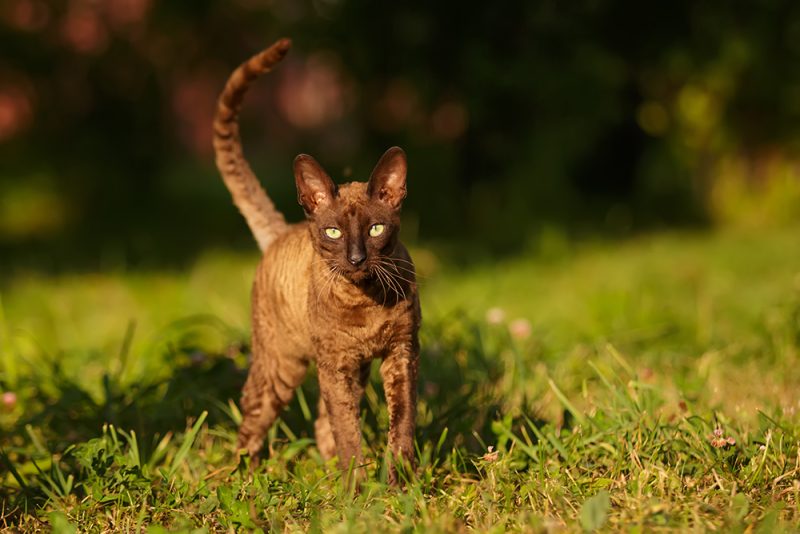

What Are the Common Cat Colors and Patterns?
All cat coat varieties boil down to four basic functions of color genes.
Genes for Basic Colors:
Genes for basic colors make the pigments that give the cat’s coat color.
- The Colorpoint (Locus C)
- Agouti (Locus A)
- Orange (Locus O)
- Locus E.
Modifier Genes:
- Brown (Locus B),
- Dilution (Locus D)
- Dilute-Modifier Locus
- Silver (Inhibitor, I Locus).
Genes for White Spotting:
Genes for white spotting don’t make any color; rather, they are responsible for the lack of color (i.e. white).
- Dominant White (Locus W)
- White Spots (Locus S). These genes
Genes for Color Patterns:
Genes for color patterns group color pigments within each hair and between bands of hairs, giving the coat the color patterns that cats are famous for.
- Tabby
- Spotted
- Ticked
Our genetic system is in duplicates, and for each given gene, an individual cat will have two copies. The effect of one copy of a gene can be dominant over the other copy, which is said to be recessive. So, the cat’s coat is determined by whether they get two copies that are the same (either two dominant or two recessive copies) or one copy that is dominant over one recessive copy. Also, the functions of one gene can mask the functions of another gene. This is why each cat is so unique!

Why Are Brown Cats Rare?
The brown color in cats derives from the black pigmentation gene. The dominant B gene creates the black pigmentation, so a cat with two dominant copies B/B will be black.
A cat with a recessive gene B/b will be black but will be a carrier of the chocolate or brown color and will transmit this chocolate variant to about 50% of their kittens.
Matings between two B/b or carriers of chocolate gene parents are predicted to produce 25% chocolate or brown kittens.
The lighter brown color or cinnamon is the less dominant gene known as b1. Cats with B/bl genes will be black color because they are carriers of the cinnamon gene. They will transmit this cinnamon variant to about 50% of their kittens. Matings between two carriers of the cinnamon b1 gene are predicted to produce 25% cinnamon kittens.
Brown or chocolate cats that have a b/b genotype and transmit this chocolate variant to all of their kittens.
Because b is dominant over b1, chocolate or brown cats can also carry a b/b1 genotype, in which case the light brown or cinnamon variant is inherited to about 50% of their offspring. Matings between two carriers of cinnamon variant cats B/b1 or b/b1 are predicted to produce 25% cinnamon kittens.
Light brown or cinnamon cats have a b1/b1 genotype and transmit this chocolate variant to all of their kittens.
This is the reason why brown or chocolate cats are rare but light brown or cinnamon cats are ever more rare.
Other Kind of Brown Cats
The tyrosinase-related protein-1 (TYRP1) gene affects the amount of black pigment (eumelanin) produced by a cat. Mutations in this gene could result in truncated proteins and cause brown coat color phenotypes in cats. An intronic mutation could result in a chocolate or dark brown cat, while a nonsense mutation of this gene could result in a light brown or cinnamon cat.

Cat Breeds With Brown Coats
While rare, you can still get your hands on a brown cat if you do your digging. Brown cats are available in pet stores and shelters across the country. If you’re looking for a brown kitty, here are some examples of breeds to consider.
1. Havana Brown Cat
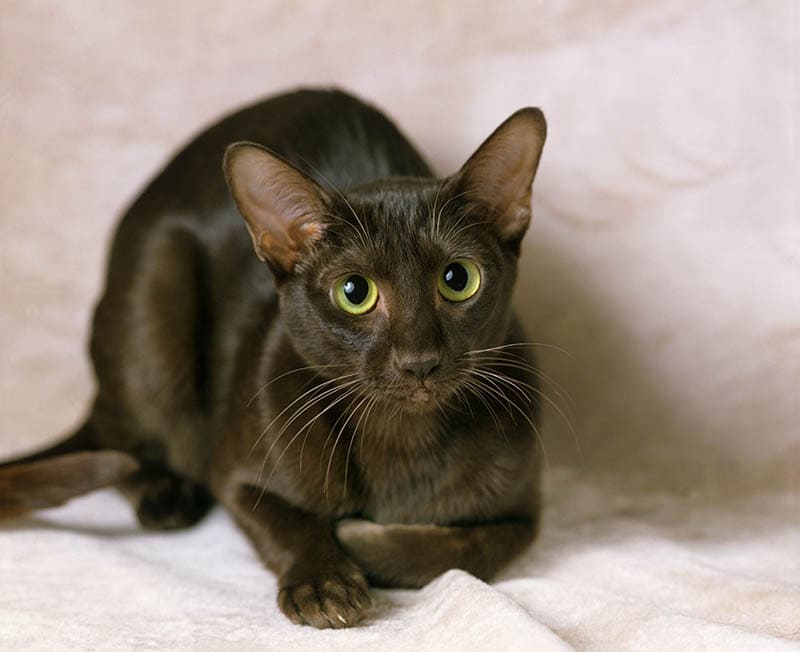
| Height: | 12 – 18 inches |
| Weight: | 6 – 10 pounds |
| Lifespan: | 10 – 15 years |
| Colors: | Brown, mahogany |
| Suitable for: | Attentive owners, families, households with other pets |
| Temperament: | Alert, intelligent, friendly |
The Havana Brown is a mix between the Siamese and domestic black cats, introduced by cat fanciers in England in the 1950s. The breed has a rich chocolatey color (whiskers included) with a glossy coat. Havana Browns are playful but sometimes prefer to be alone. Their emerald eyes and smooth coats make them a sight to behold.
The Havana Brown looks marvelous and also makes for a great household companion. However, it’s one of the rarest cat breeds, with fewer than 1,000 worldwide. The breed was closed off to outbreeding very early, narrowing the gene pool. If you want a Havana Brown, be prepared to dig deep into your pockets.
2. The York Chocolate Brown Cat
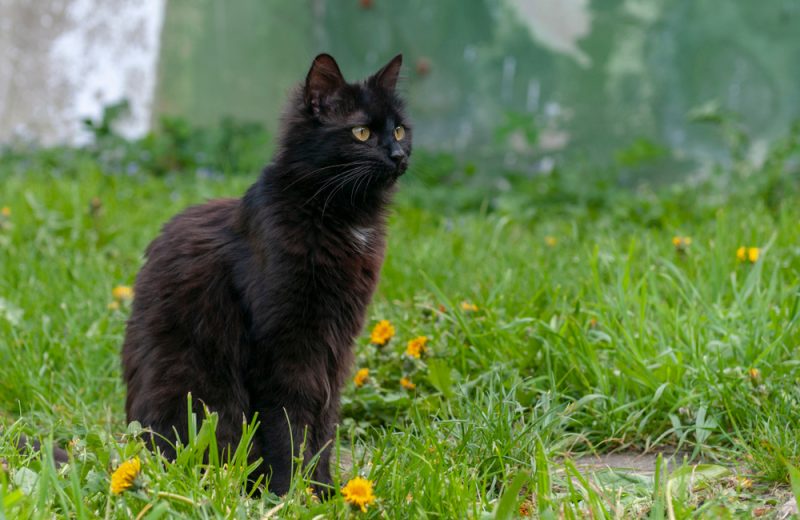
| Height: | 8–10 inches |
| Weight: | 10–16 pounds |
| Lifespan: | 13–15 years |
| Colors: | Brown, chocolate, lavender |
| Suitable for: | Families that can give their cats plenty of time and attention |
| Temperament: | Loving, affectionate, sociable, interactive, smart |
The York Chocolate has a dark brown coat, resembling the color of dark chocolate. It’s a rare semi-long-haired feline with a tapered tail. Their fur is smooth, luxurious, and irresistible to stroke. First bred in New York, the breed comes from crossbreeding various long-haired domestic cats.
These kitties are loving creatures, bursting with energy and intelligence. They’re also excellent hunters and can help eliminate rodents around your home.
The York Chocolate was initially a show cat and is one of the rarest cats since the breed is not recognized by any of the major cat associations. Getting your hands on one will set you back between $600 and $1,000.
3. The Burmese
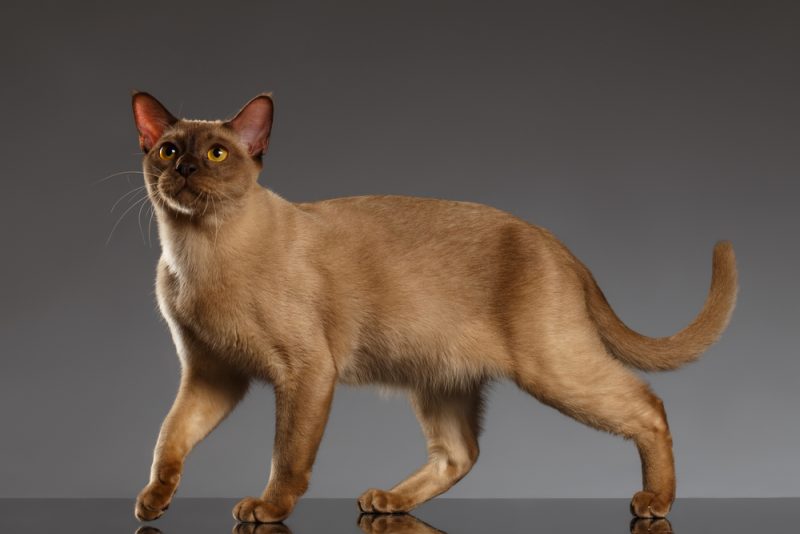
| Height: | 10–12 inches |
| Weight: | 8–12 pounds |
| Lifespan: | 15–20 years |
| Colors: | Champagne, platinum, fawn, cream, cinnamon, sable, blue, chocolate, and various patterns |
| Suitable for: | Families and individuals interested in a loving, attentive, fun-loving companion |
| Temperament: | Energetic, super smart, and playful |
Not all four Burmese cat breeds are brown, but two of the official colors are. The brown Burmese cats are either sable or champagne in color. These short-haired cats are extremely social and get along with humans and other pets, including dogs. Unlike the above breeds, Burmese cats are natural breeds, the only ones in the brown cat category.
Burmese cats have glossy coats with golden eyes and are a sight to behold. They’re easy to groom and love performing tricks. If you’re looking for a fun-loving cat to give you and your family company, then the Burmese cat is just what the vet ordered.
4. The Oriental Shorthair
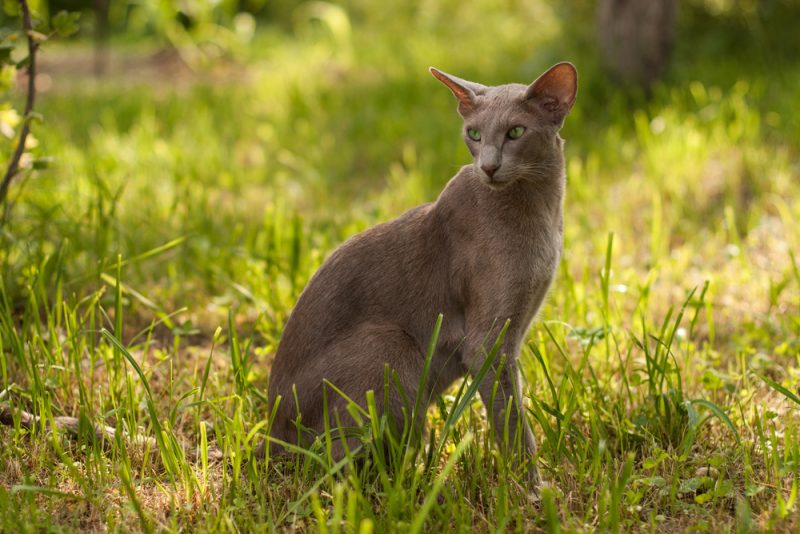
| Height: | 9–11 inches |
| Weight: | 5–12 pounds |
| Lifespan: | 12–15+ years |
| Colors: | Almost every color and pattern |
| Suitable for: | Families or singles with or without pets |
| Temperament: | Playful, active, affectionate, cuddly, intelligent, vocal, attention-seeking |
This short-haired feline is a peculiar-looking cat with a slender frame and angular face. Not all Oriental Shorthairs have brown coats. Some have blue, cream, frost, and red hues, sometimes with tortoiseshell and smoke patterns.
The Oriental Shorthair is a talkative cat with a strange meow called a honk. They’re super affectionate and enjoy the company of their family and other pets. As such, they tend to get attached to their owners so much so that they follow them everywhere they go.
5. The Ragamuffin
| Height: | 10–15 inches |
| Weight: | 15–35 pounds |
| Lifespan: | 12–17 years |
| Colors: | White, blue, black, red, cream, chocolate, lilac, cinnamon, seal brown, or mixed colors |
| Suitable for: | First-time owners, busy owners, families |
| Temperament: | Playful, curious, social, independent, talkative |
The Ragamuffin comes in various colors, but it’s among the few cat breeds that come in a solid brown. These adorable furballs are large cats with big round eyes and thick fur coats. They have muscled bodies with medium-to-long hair. They also mature very slowly, taking about four years to mature fully.
Ragamuffins are a pleasure to hold, stroke, and cuddle with. However, their thick fur coats require proper grooming or may become matted or untidy. Brown Ragamuffins are pretty rare, so good for you if you can get your hands on one.
6. The Chocolate-Colored Persian
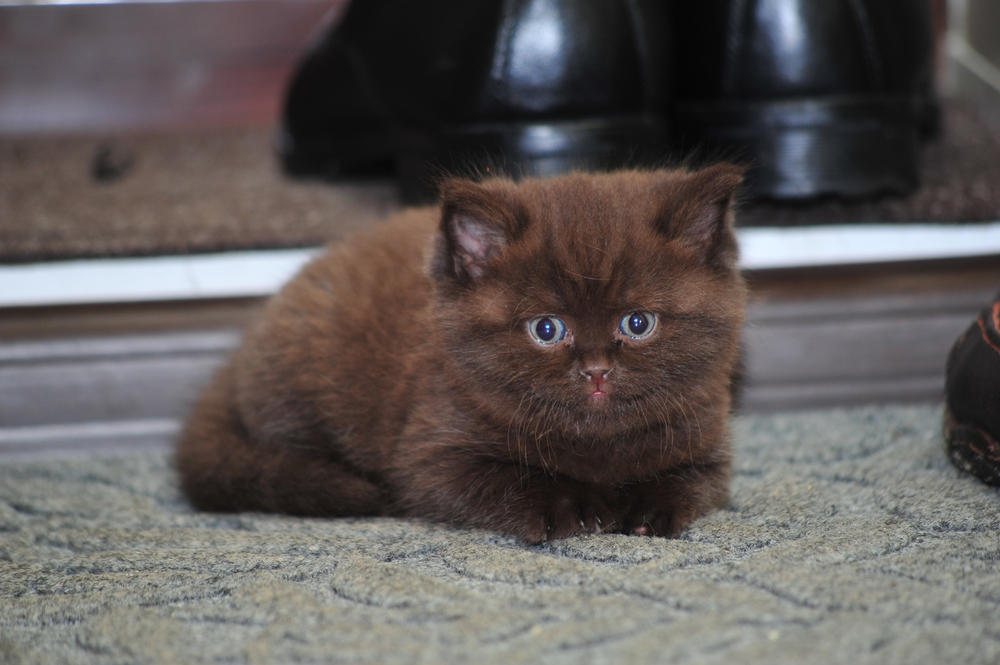
| Height: | 10–15 inches |
| Weight: | 7–13 pounds |
| Lifespan: | 13–15 years |
| Colors: | White, red, cream, black, blue, chocolate, lilac, silver, golden, tortoiseshell, blue-cream, tricolor, sable, tortoiseshell, bicolor, tricolor, tabby, smoke, shaded |
| Suitable for: | Families or singles in a quiet household |
| Temperament: | Calm, affectionate, laidback, playful, gentle, quiet |
Chocolate Persians are a rare breed of Persian cats that have chocolate-colored coats. Persians are the most popular pedigreed cat breed in the US, but finding a brown one still proves challenging for most.
Despite their rarity, Persians are an extremely lovable breed with long, thick fur that gives them a chubby appearance. They’re gentle, extremely affectionate felines that love curling with their owners in bed. These kitties love to stay indoors to decrease the likelihood of their thick fur getting tangled with trees and shrubs.

Final Thoughts
Brown cats are indeed rare, and if you’re lucky enough to find one, appreciate their rarity with undying love and proper care. However, all cats deserve love and attention regardless of their color or look. Feed your feline friend a healthy diet and schedule regular vet visits to keep them in good shape.
- See Also: Brown Cat Breeds (With Pictures)
Featured Image Credit: Joan Wozniak, Shutterstock
